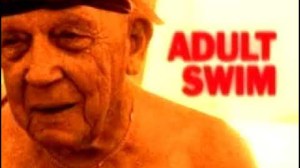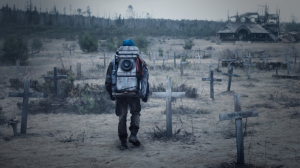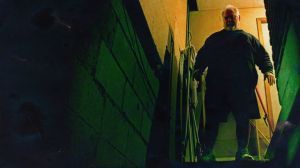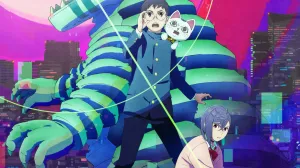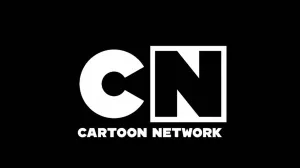
Next week sees the second episode of Batman from writer Tom King and artist David Finch.
Videos by ComicBook.com
Opening with a large-scale action issue, Finch set himself apart from the subdued visuals of Mikel Janin, who drew Batman: Rebirth #1 two weeks before.
Finch, who has worked plenty on the Dark Knight in the recent past, has been away working on Wonder Woman for a while…but now that he’s back in Gotham, he’s trying to up his game, while he and King work to live up to the high standards of the outgoing creative team of Scott Snyder and Greg Capullo.
King and Finch joined ComicBook.com for a discussion on the relaunched series.
David, you’ve done a lot of high profile work in your career, and you’ve done a lot of big launches, but is it kind of daunting to be taking on not only a new Batman #1, but doing it on the heels of Scott and Greg, who have kind of been the voice for the last five years?
David Finch: Yeah, absolutely, it is. I mean, I’ve done a lot of high profile things, and every time, I’m a nervous wreck. It’s fun. It’s always fun, but it’s always difficult and stressful, and you know, I’m pretty neurotic, anyway.
It’s tough, but this is definitely an added pressure, coming on after such a great run. Such a long, iconic, great run. You know, there was some hesitation from me coming on in the first place, just because of that. You know, it can be, maybe, a mistake to try and follow up after a great act, but with the stories that Tom’s writing, I’m not worried about that at all. You know, I’m worried about a lot of things, but I’m really not worried about how the story is going to come across and whether Tom can carry through the success that they had before us. I think we’re going to be okay on that score.
Now that we’ve seen the first issue, what can you tell us about the appeal of starting that way?
Tom King: The tone of the issue is a super simple concept. The idea is terrorists blow up a plane that’s falling from the sky, it’s going to come down in Central Square in three minutes, and Batman’s on a roof and looks up and sees a plane falling. What does he do?
It’s about: Can Batman save the day? If he does, what does that cost him to do it? It should be a little different because I write a little differently than a lot of people. I don’t use inner monologue. I don’t get inside the character’s head. Going off of an essay I read by the great David Finch a long time ago, I don’t like people standing around talking. It’s supposed to be go-ahead, it’s supposed to be constant action. Through that action, we get revealed what the true character of Batman is, is sort of what drives us forward.
Other than that last-page cliffhanger, it’s a done-in-one kind of story. It sounds like this is essentially a bottle episode that is right out of the gate. Well, here’s Batman, enjoy!
King: Yes, I mean there are story elements in there that will play out for an entire year. They exist mostly in the background and you might not even see them and you might not see their impact for some time to come. Of course, there’s a twist at the ending because that’s what every great first issue needs.
The basic idea here is to introduce all of the classic elements, to show you what the Batmobile is, who Batman is, who Alfred is, who Duke is, who Gordon is, and to give you that in the context of the story that’s about a hero. That’s about- These days we feel so helpless, these God damn terrorist attacks, and this is a guy who can fight back against that. It’s a chance for people to read that and sort of escape into it for a little while.
Now, David, one of the things that strikes me about the first issue is that sounds a lot of fun for an artist. I mean, to me, anytime you can draw 20 pages of an airplane, I kind of assume that, A it’s a pain in the ass, and B it’s a lot of fun.
Finch: Yeah, I mean, it was a blast to draw. It was incredibly stressful to draw. It was a very difficult issue. I think, definitely the most challenging issue that I’ve ever drawn, for sure. And, I’m so glad that we did it. I feel that it came out really well. It was all worth it.
But, it was tough. I mean, Tom put things in the script that I have never seen really before, and it put me in a spot where, I thought, I have no frame of reference for some of this stuff. I just had to go for it. So, it was a challenge. And, I think it is really going to set the tone for everything that we are doing going forward. It is incredibly inventive, the whole issue, I think.
You know, Tom, I will say that with him saying that you’re having him draw stuff that which he has no frame of reference, given that I’ve seen Mitch [Gerads, King’s artist on Vertigo’s Sheriff of Babylon] go to Twitter and be like, “Hey, can anyone give me a really good example of something in the desert?” I kind of feel like this is your wheelhouse. You’re just kind of creating crazy visuals that challenge artists to do something that they have never ever done before. Is that on purpose or is that just the way your brain works?
King: I mean, comics are a visual medium first. I mean, the pictures, the whole point of the words is to make the pictures look amazing, to me. That’s what sort of magical about them. Why so many people, I think, keep coming back to this, is that we can do things that they can’t do in novels and they can’t do in movies, because our pictures can do amazing things with time and space and all that.
And, you always write to the artist you have, and I got a guy who can draw the best action scenes in comics and the best slash pages in comics. So, I’m going to draw something huge and big. His stories, I really wanted to go back to that idea of Crisis and The Ultimates, with the wide screen scope.
When I came back to comics in the early 2000s, I was like, “comics can get people like movies. They can tell stories that are that big and that action-oriented, and I wanted to kind of go back to that passing. So, that was a major inspiration for this sort of aesthetic I was going for, and David killed it and Jordie [Bellaire] colored it perfectly, and John Workman lettered it perfectly. I think it works.
I feel like David and Mikel Janin are two of my favorite artists working right now, but, stylistically, they are very, very different. Do you have to kind of adjust your mentality at all going from the rebirth to number one, and going from Mikel to David? Because, again, they are both doing great Batman work, but they feel very, very different tonally to me.
King: I mean, it’s hard, because Mikel and I worked together for two years on Grayson, so when I write for Mikel, I know what he is going to draw. I can kind of sense which of my words he is going to throw away and which he isn’t. With David, it’s the first time that I’ve worked with him, and I insanely admired since he blew the world away with the New Avengers #1. It was more intimidating, but it did feel like I was working with a net, because I knew if I wrote something shitty, Dave would draw beautifully. It’s definitely a different experience, at least in that way.
Now, obviously, you’ve got, you described it with Bruce and Gordon and Duke, like you have this tight-knit supporting cast set up for this book. Are you going to keep it, even though you are kind of doing wide screen action, are you going to keep it more intimate in terms of the immediate cast, because obviously we’ve got James [Tynion IV] doing Detective where there’s a billion and a half character, like everybody in Gotham appears in that book.
King: The nice thing about that universe is that we are all crazy. I was on the phone with James and Scott [Snyder] like an hour ago, so the books will cross over and will connect in that way. But, as far as the Batman “central” book, I want this to be, my real inspiration isn’t Scott’s run, but the animated series. Each thing was about Batman and his villains.
I want this to be the book where people, when they want the Batman summer blockbuster, this is the book they go to.
Are we going to get a little bit more of a sense for Duke? Because, I think that, one of the things that stuck me as really interesting was that he was such an important character in the Rebirth issue, but as far as I could tell, we never actually got his new name, which I assume is Lark just from context.
King: The way we are going to start out with Duke, is we are going to copy what was done with Tim [Drake] in the beginning, which he is going to sort of in the cave for a little while training before he comes out on missions as Batman’s partner.
But, the story of how of who Duke is and sort of his evolution into that partner is a story Scott is telling in All-Star Batman. So, you’ll see that story unfold there. But, Duke and his character will be main characters in this main Batman book.
David, one of the things, and I kind of got asked the Aquaman team about this- Most people on Rebirth are experiencing kind of a sea change, and you are closely associated with Batman by a lot of fans. How do you kind of breath fresh air into the, kind of, look and feel into what you are doing when you are working on a character that you’ve done about a thousand pages before.
Finch: I over think that a lot. This is actually my first time really coming back to something that I had done before. I had never come back to a project like this before, but, really, I think the stories are very, very visual, and also very challenging for me visually. So, its pushing me in a direction that I wouldn’t have imagined going into it.
Really, for me, I would have a preconception of what I think I’m going to do when I first hear that I’m going to do something, and I see a bunch of pictures in my head, and this is what it’s going to be, and it is definitely very different from that. I think it is going to have a bit of a different feel then what people might expect.
I’m letting the story really take me in the direction that it is taking me and trying not to worry about it too much. I feel very, very strongly about the script and about what the book is about. I’m just kind of going with that.
One thing I will say is, I have got a lot of criticism over the years, and I think it is very legitimate, that I don’t really have a broad range of facial expressions and those sorts of things in characters. It’s something I have really been working on. I think that the characters in this stuff are so alive and individual, each one of them has such a feel to them, I really wanted that to come across as much as possible. So, I’ve been really, really putting a lot of effort into trying to make those scenes work, and I’m finding that I’m really, really enjoying it.
You know, that kind of ties into something that I was going to use as my last question, because I figure each of you can answer this in slightly different way, more likely than not. Which is, you have a character and a look that, traditionally, is the darkest and the angriest of the DC universe, essentially. How does the Rebirth status quo of restoring hope and optimism to this world, play with you preconceptions of Batman?
King: It’s two things. Number one, it would be stupid to say that Batman needs to be reborn or redone, or that he was done poorly in The New 52, because that didn’t happen with this character.
This character was done right, and done well. We have no need to reject any of that. We want to embrace what Scott and Greg did, and, in a nice way we would say we tried to copy them, but in a way try to be influenced by them and to build on them.
The second part, I don’t want a Batman story that is sort of all about him staring at a mirror and be like, “Whoa! The monster inside me” and “my parents.” That doesn’t interest me. What interests me about Batman is the heroic aspects of him. What makes him a hero for our time and what makes him a hero for the DCU. That’s what I find fascinating, and I think that there is hope in there and his mission is a hopeful one.
It’s utterly quixotic to think he can defeat crime. He can’t, right? It’s impossible. But, he still goes out does it and every day he keeps going and going and going, and the impossibility of that mission and him embracing that hope and the hope haunting him, I think is infinitely fascinating and will be at the core of the character.
I want this Batman to be the hero everyone wants him to be, and the hero you want to read at the end of the day. That’s the point of the whole book.
Batman is kind of inherently dark and our take on Batman, traditionally has been heavily inked and very dark. Is there any visual cue that you are taking to reflect the new sensibility and the look?
Finch: No. I don’t think that drawing Batman very dark and angry really, actually fights that, at all really. Visually, for me, that’s who he is. I can’t help it. I don’t know that I would have the ability to draw a lighter, brighter Batman. I don’t feel that’s what Tom means. I don’t want to put words into your mouth, Tom.
They’re very action-oriented stories. You don’t see Batman just brooding and looking sullen. That’s not really what he is doing, and its not really what I am drawing, but definitely, when I draw him, I like him edgier, darker, angry looking sort of character. I can’t help it, its just what I do.

